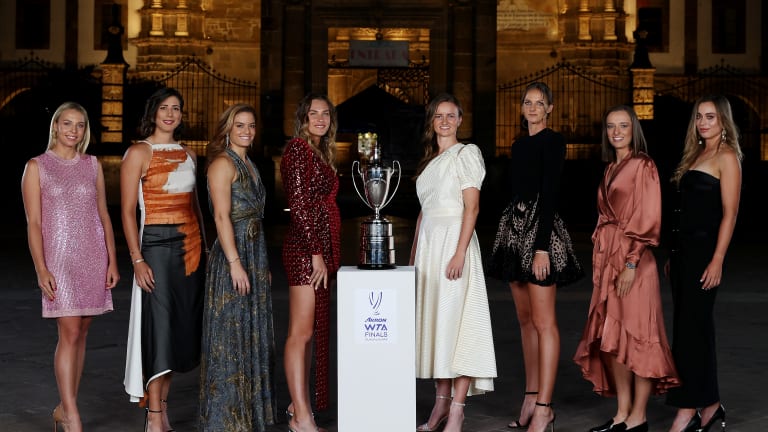WTA Finals
WTA Finals Preview: With a first-time champion guaranteed, embrace the chaos and enjoy the tequila
By Nov 09, 2021WTA Finals
How Coco Gauff pulled off a miracle marathon win over Zheng Qinwen in Riyadh
By Nov 09, 2024WTA Finals
Coco Gauff rallies against Zheng Qinwen for first WTA Finals title in Riyadh
By Nov 09, 2024WTA Finals
WTA Finals Preview: Coco Gauff, Zheng Qinwen face off for first year-end crown in Riyadh
By Nov 09, 2024WTA Finals
Coco Gauff solves Aryna Sabalenka for first final at WTA Finals, will face Zheng Qinwen for Riyadh title
By Nov 08, 2024WTA Finals
Zheng Qinwen holds off Barbora Krejcikova to reach WTA Finals final
By Nov 08, 2024WTA Finals
WTA Finals Preview: Aryna Sabalenka vs. Coco Gauff leads semifinal slate
By Nov 07, 2024WTA Finals
Defending champion Iga Swiatek eliminated from WTA Finals despite 2-1 record, win in last match
By Nov 07, 2024WTA Finals
Barbora Krejcikova surges into WTA Finals semis, defeats Coco Gauff, eliminates Iga Swiatek
By Nov 07, 2024WTA Finals
Into WTA Finals semifinals, Zheng Qinwen hopes to match Serena Williams' 2012 feat
By Nov 06, 2024WTA Finals Preview: With a first-time champion guaranteed, embrace the chaos and enjoy the tequila
Based on how the 2021 season has played out, the 50th edition of the tour's season-ending championships in Guadalajara is full of possibilities—expected and otherwise.
Published Nov 09, 2021
Advertising
Advertising

The eight contenders pose with the Billie Jean King trophy during Tuesday evening's draw ceremony.
© Getty Images
Advertising

In Guadalajara, Krejcikova is the only 2021 major singles champion vying for the hardware.
© Getty Images